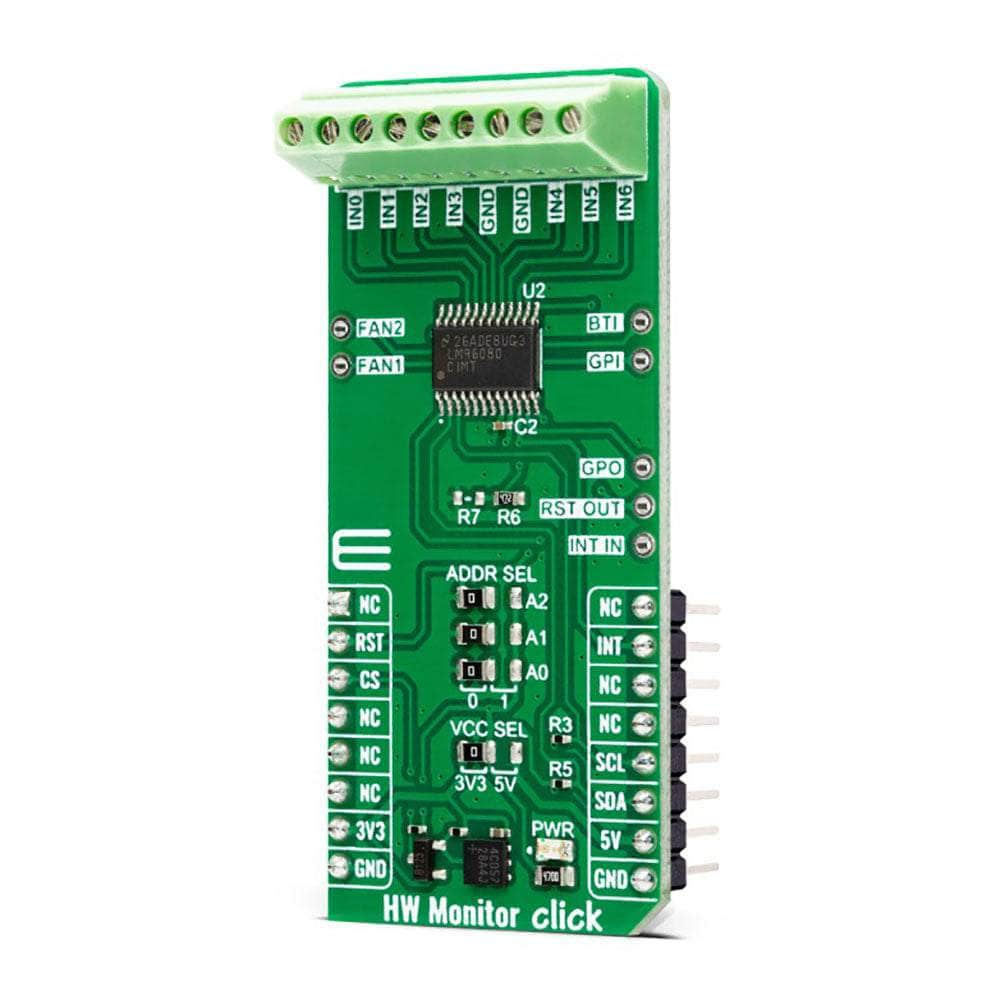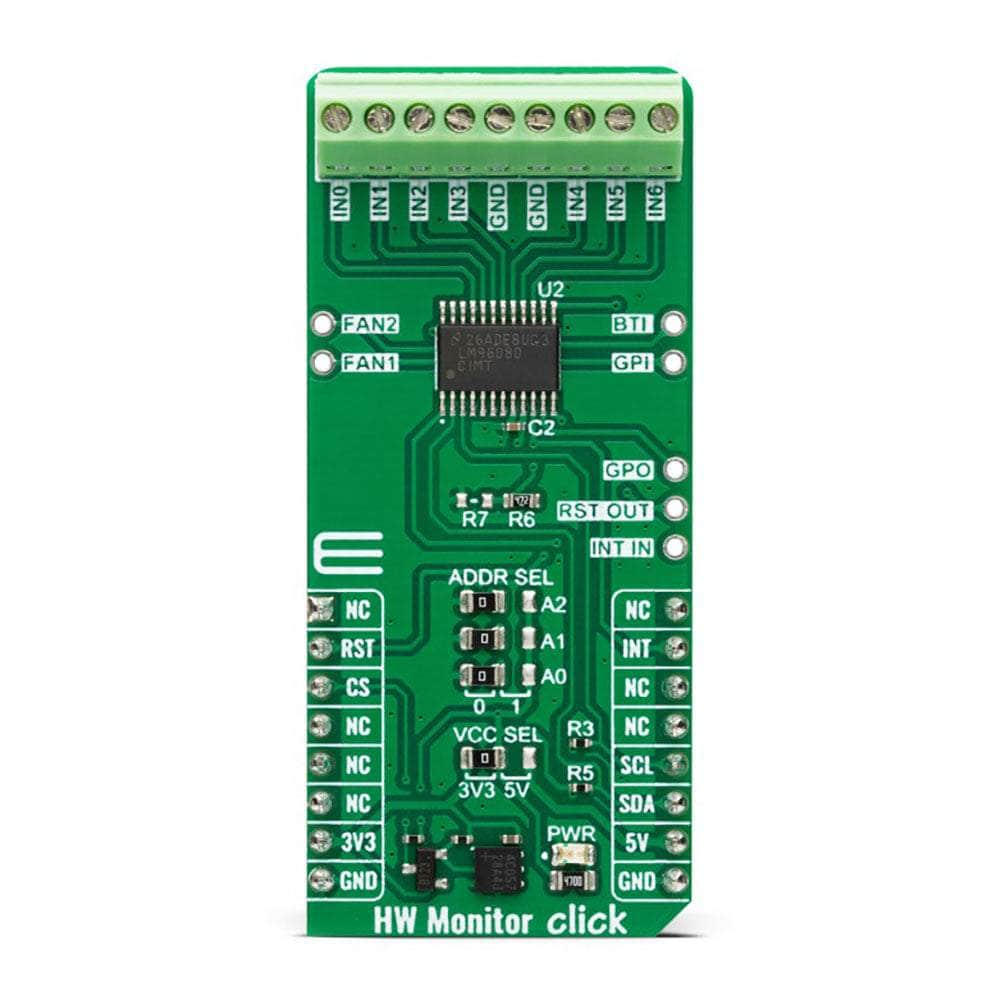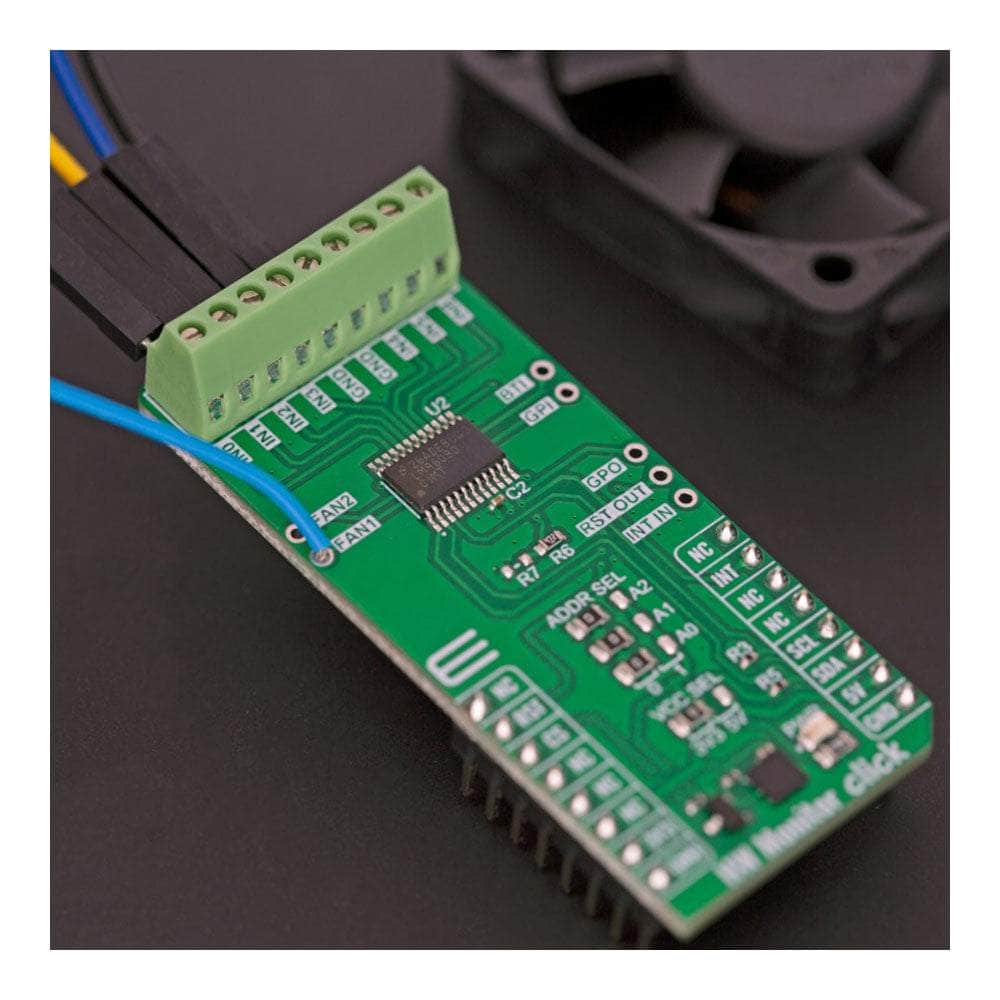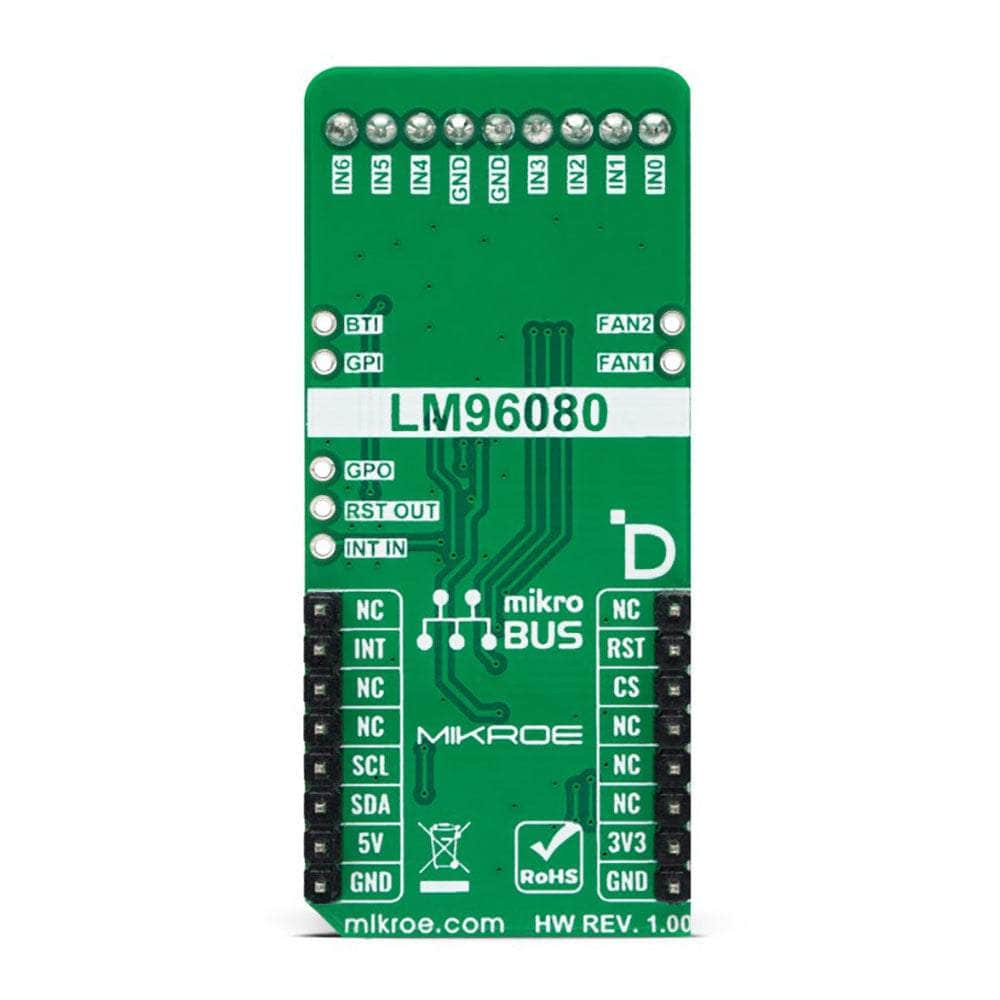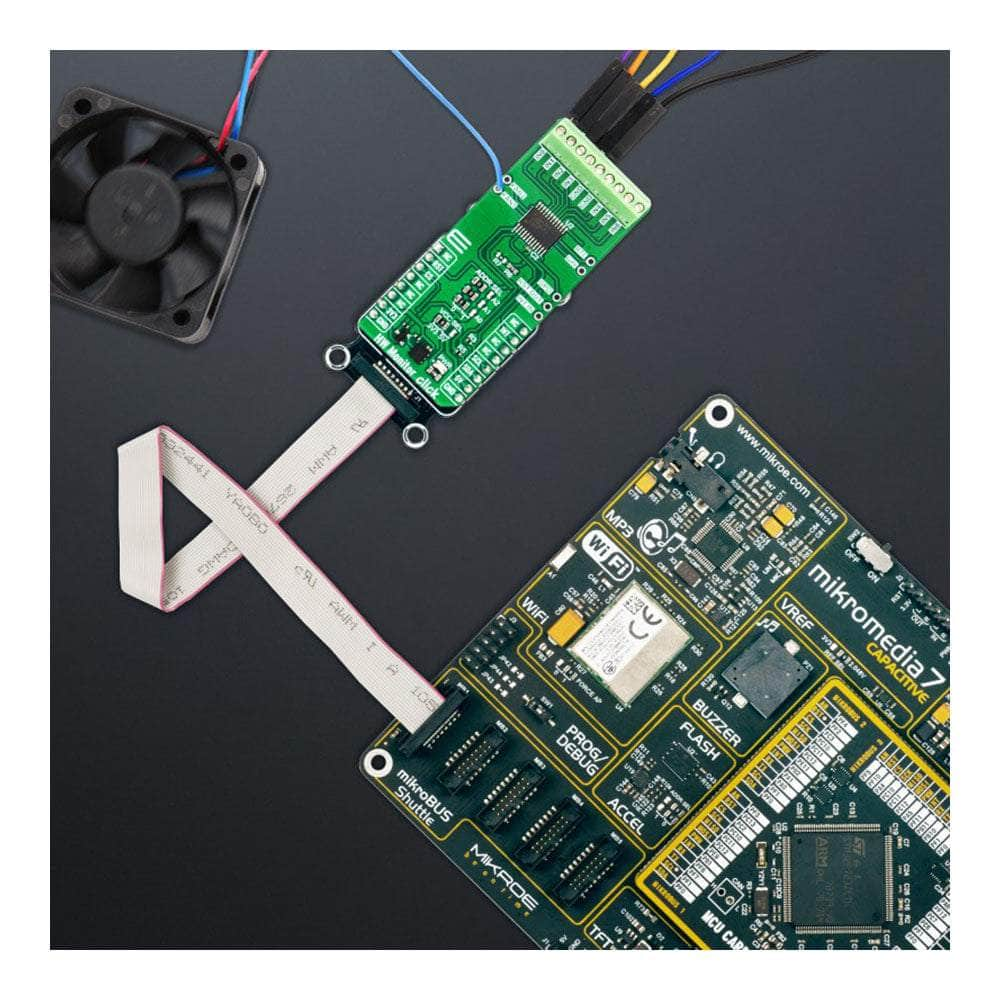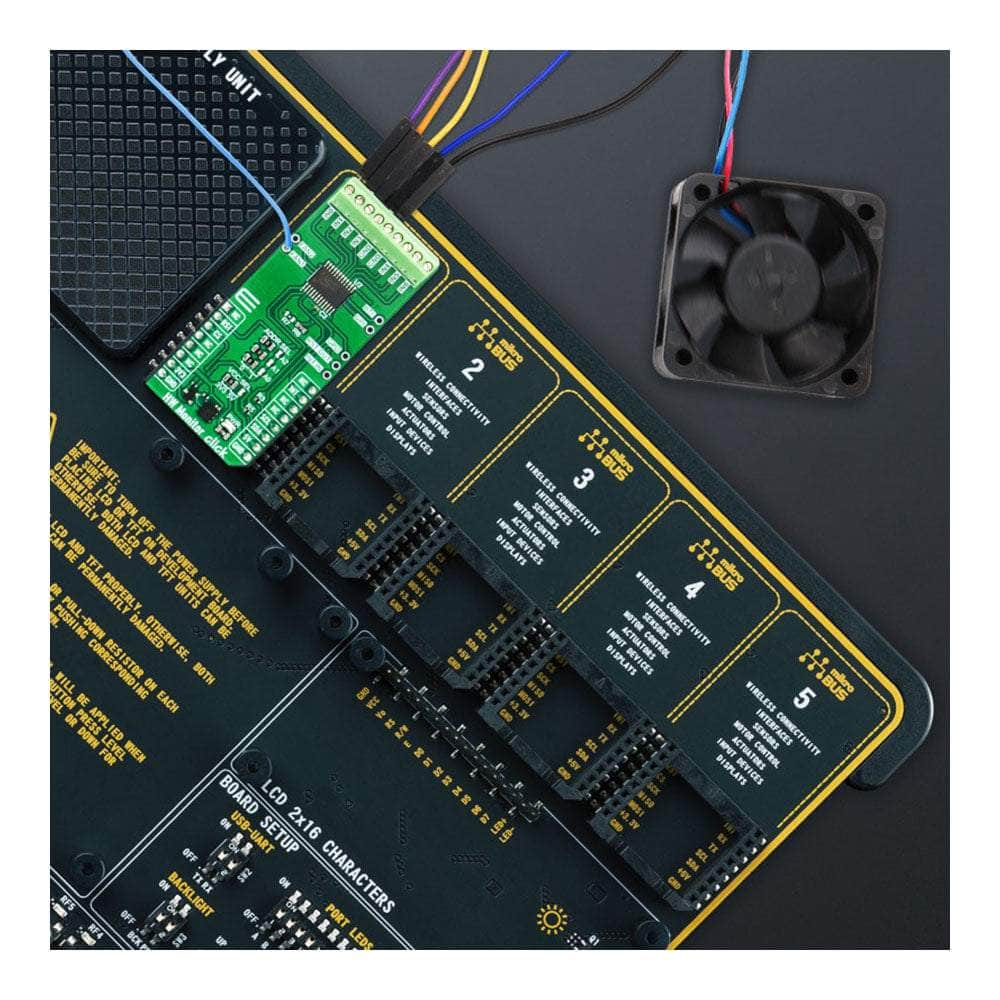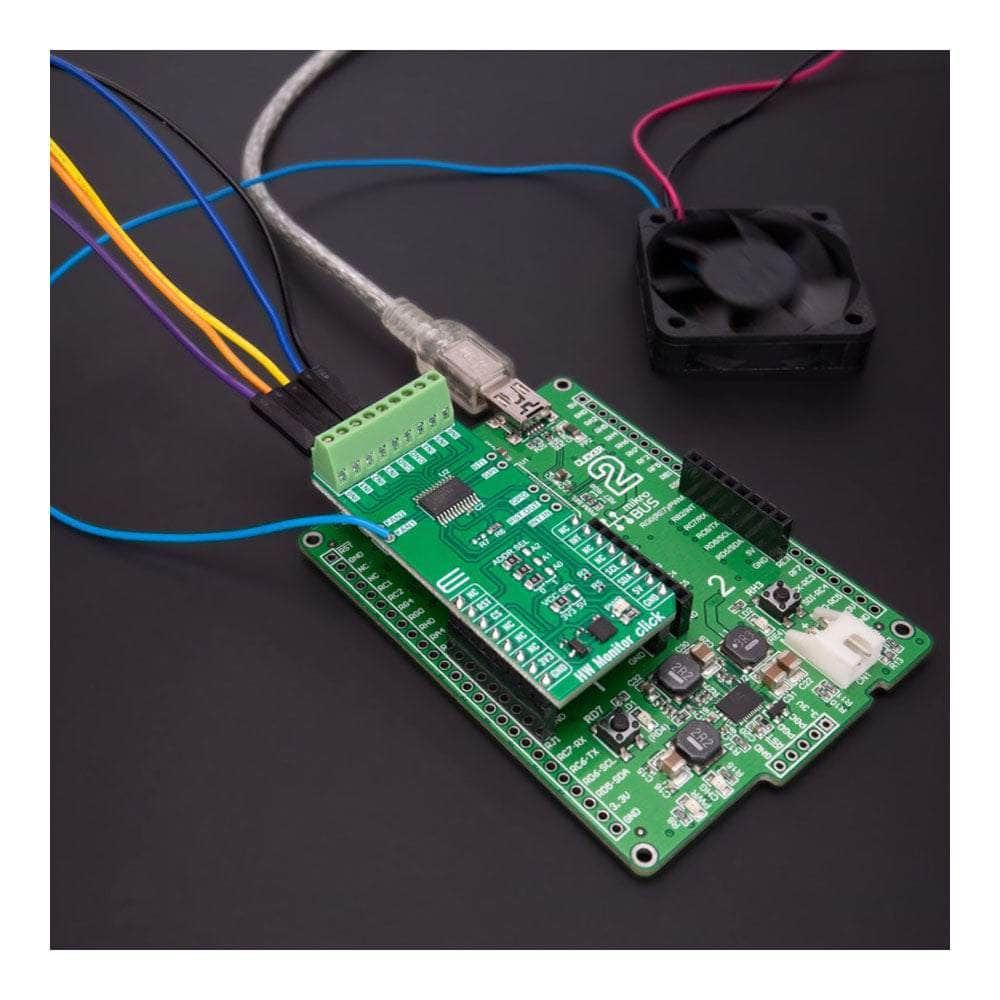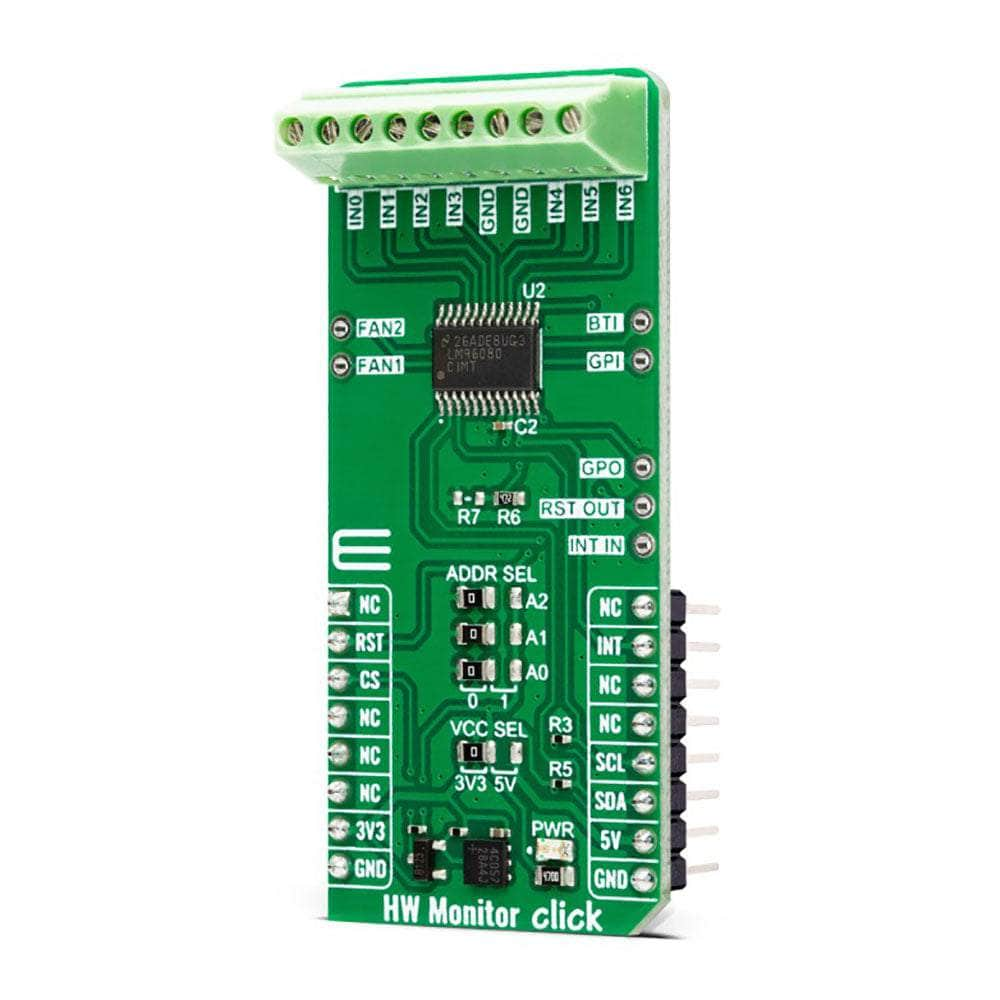
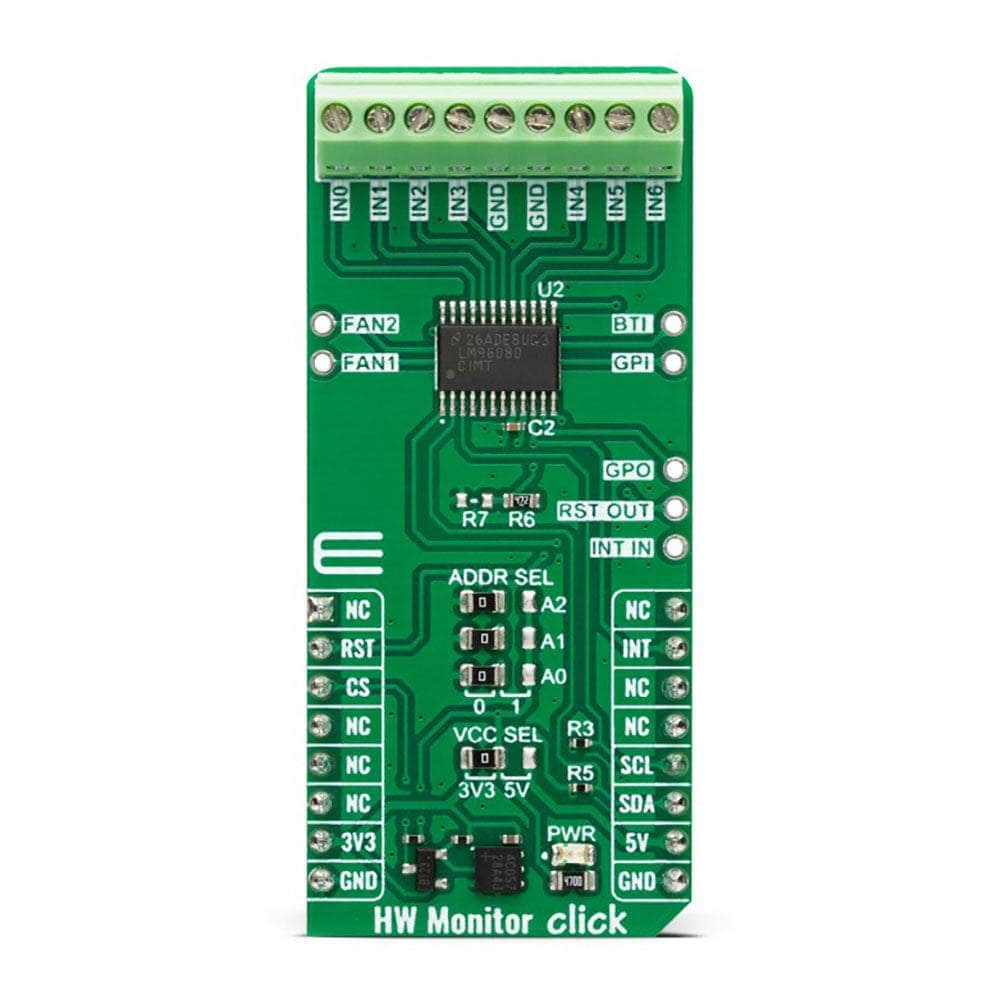
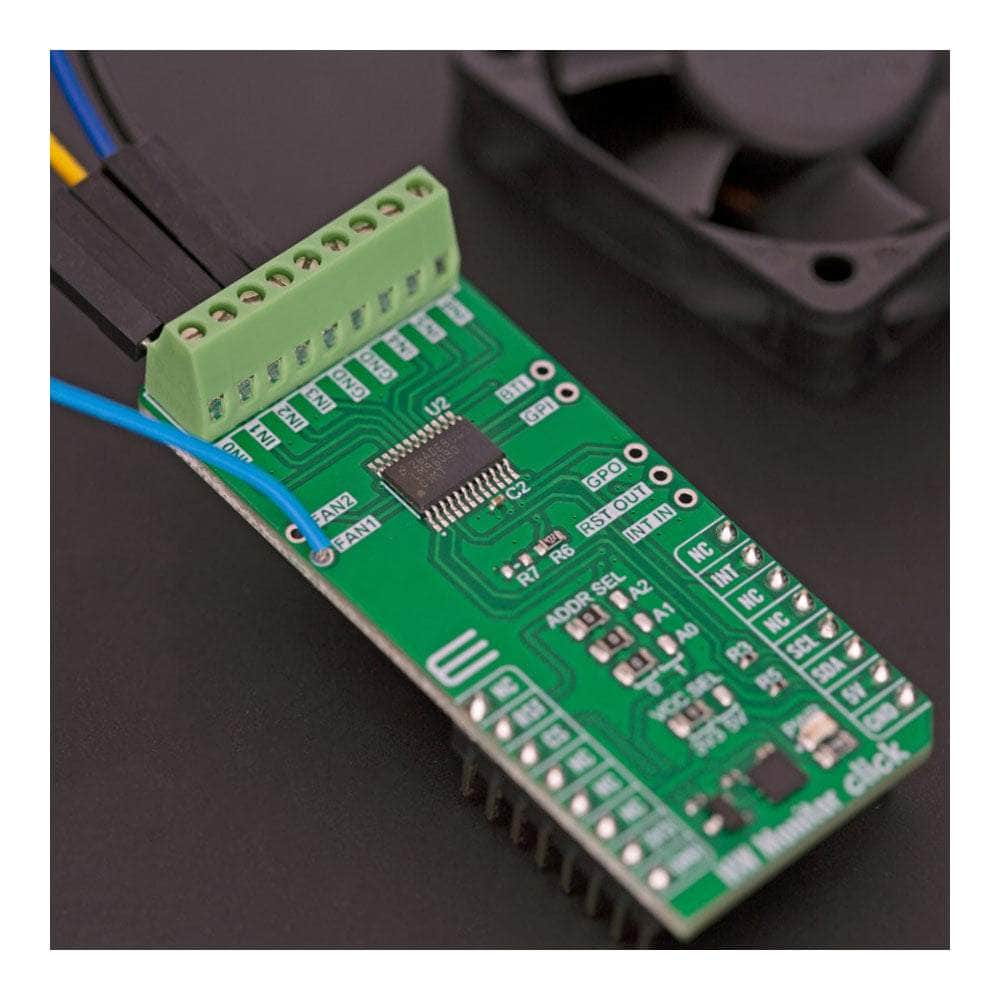
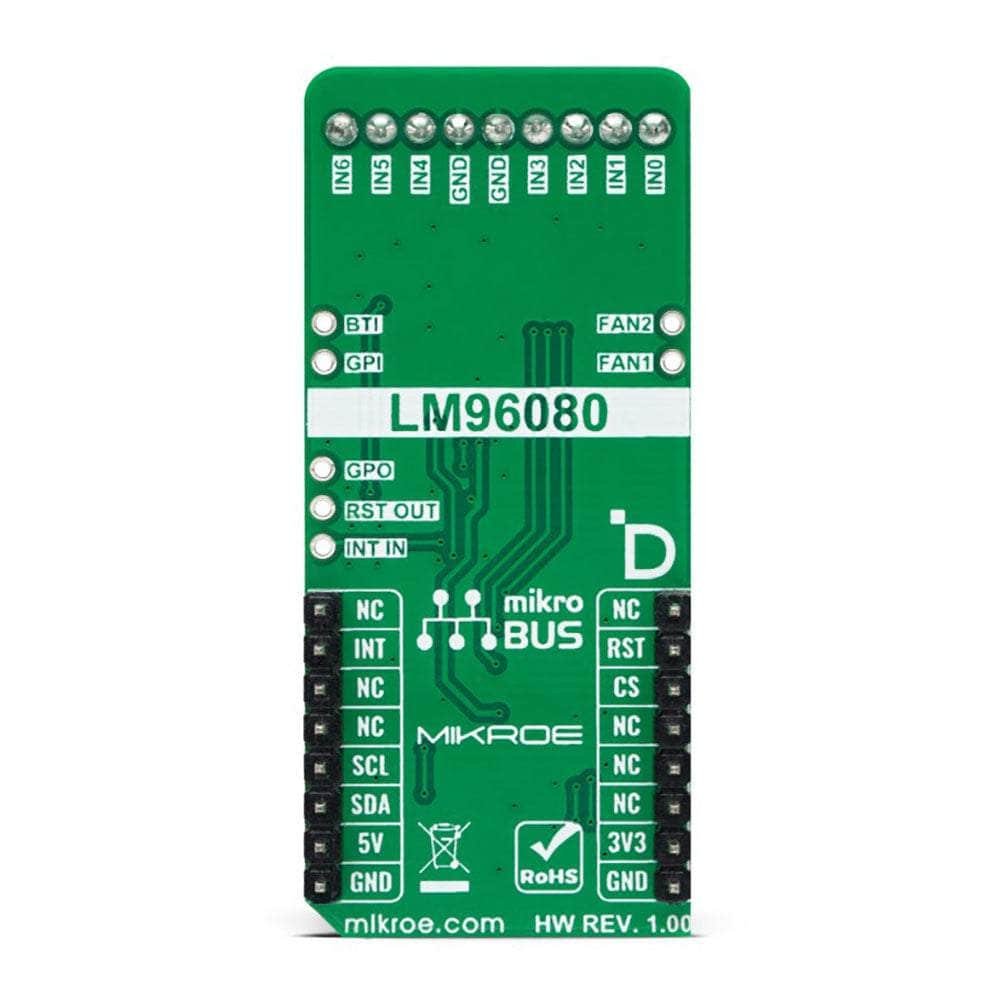
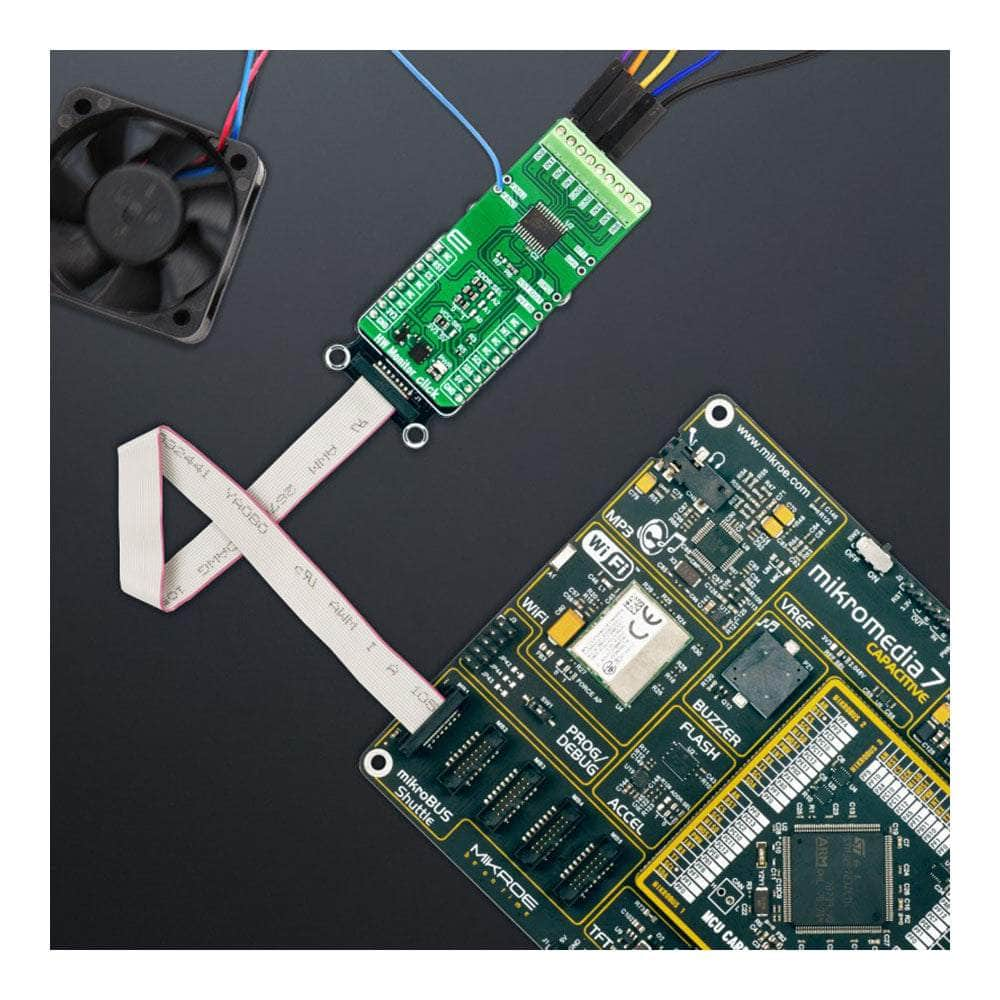
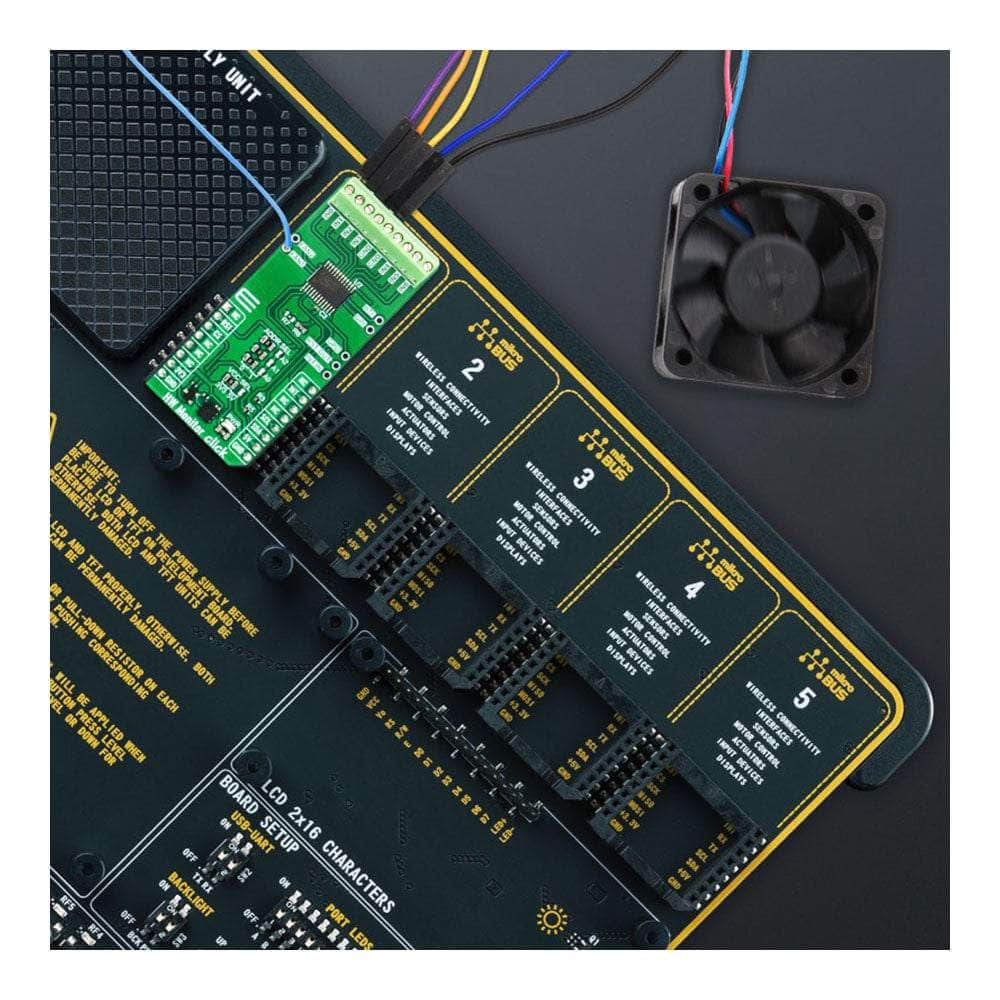
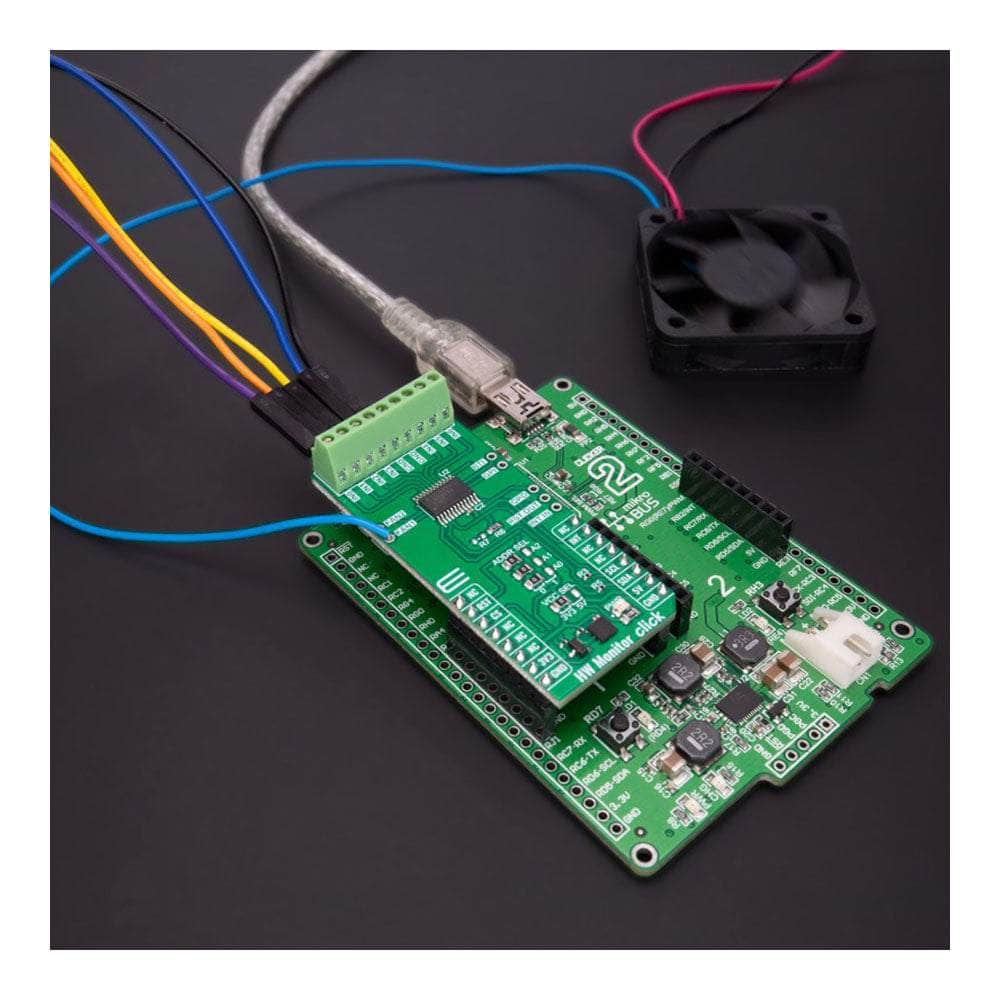
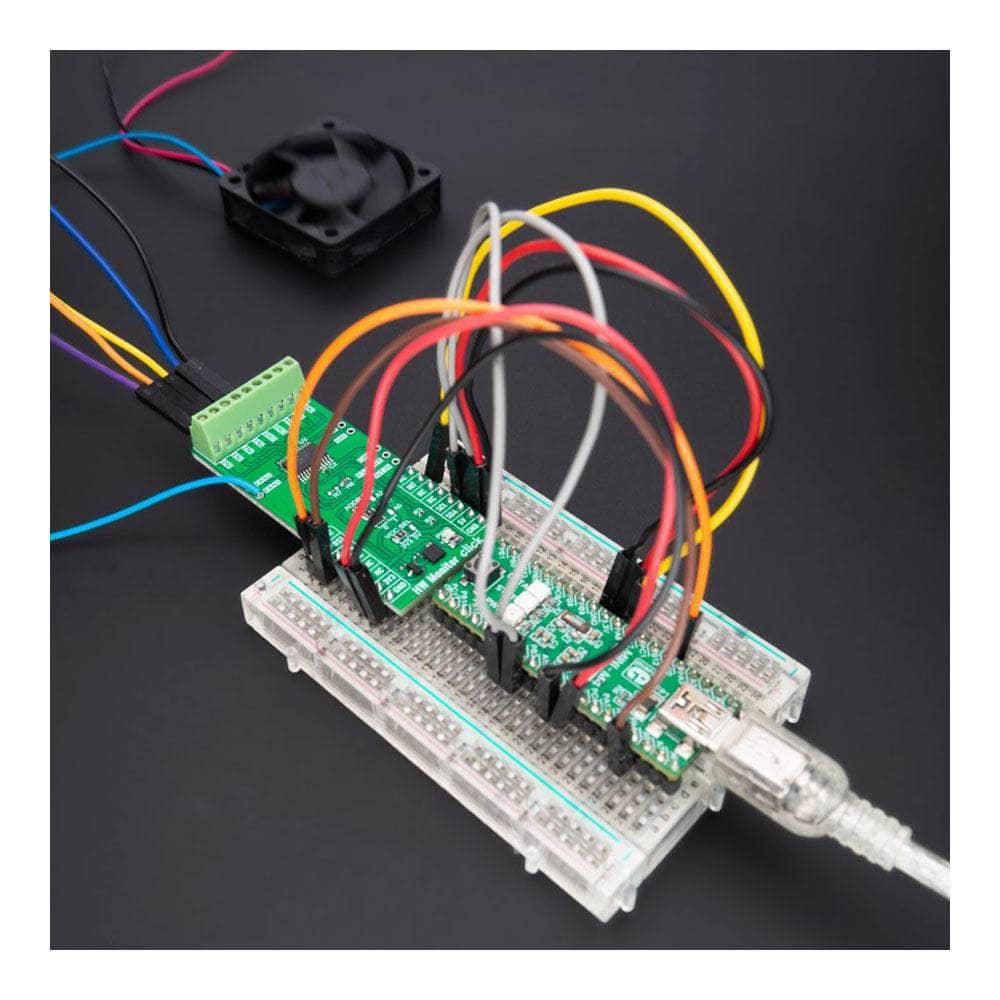
Key Features
Overview
Introducing the HW Monitor Click Board™: Your Ultimate Hardware Performance Regulator
Discover the power of the HW Monitor Click Board™, a compact add-on board designed to monitor and regulate the performance of various hardware components within an embedded system. This exceptional board is equipped with the LM96080, an I2C-configurable system hardware monitor from Texas Instruments. This advanced monitor contains a 10-bit delta-sigma ADC capable of measuring seven positive voltages and local temperature.
Experience Advanced Monitoring Features
The LM96080 also boasts two programmable fan speed monitoring inputs, along with other hardware monitoring functions such as chassis intrusion detection, additional external interrupt input, master reset for external purposes, and a sequencer performing watchdog window comparisons for all measured values. This versatile Click board™ is perfect for system thermal and hardware monitoring in a wide range of applications, including servers, electronic test equipment, instrumentation, communications infrastructure, and consumer electronics.
Supported by a mikroSDK-Compliant Library
Enhance your software development experience with the HW Monitor Click Board™, which is supported by a mikroSDK-compliant library. This library includes functions that simplify the development process, allowing you to focus on what's important: your project.
Ready for Use with mikroBUS™
The HW Monitor Click Board™ arrives as a fully tested product, ready for use on a system equipped with the mikroBUS™ socket. Don't wait any longer – experience the benefits of this advanced hardware monitoring solution today!
Downloads
Wir präsentieren das HW Monitor Click Board™: Ihr ultimativer Hardware-Leistungsregler
Entdecken Sie die Leistung des HW Monitor Click Board™, einer kompakten Zusatzplatine zur Überwachung und Regelung der Leistung verschiedener Hardwarekomponenten in einem eingebetteten System. Diese außergewöhnliche Platine ist mit dem LM96080 ausgestattet, einem I2C-konfigurierbaren Systemhardwaremonitor von Texas Instruments. Dieser fortschrittliche Monitor enthält einen 10-Bit-Delta-Sigma-ADC, der sieben positive Spannungen und die lokale Temperatur messen kann.
Erleben Sie erweiterte Überwachungsfunktionen
Das LM96080 verfügt außerdem über zwei programmierbare Lüfterdrehzahlüberwachungseingänge sowie andere Hardwareüberwachungsfunktionen wie Gehäuseeinbrucherkennung, zusätzlichen externen Interrupt-Eingang, Master-Reset für externe Zwecke und einen Sequenzer, der Watchdog-Fenstervergleiche für alle gemessenen Werte durchführt. Dieses vielseitige Click Board™ eignet sich perfekt für die thermische und Hardwareüberwachung von Systemen in einer Vielzahl von Anwendungen, darunter Server, elektronische Testgeräte, Instrumentierung, Kommunikationsinfrastruktur und Unterhaltungselektronik.
Unterstützt durch eine mikroSDK-kompatible Bibliothek
Verbessern Sie Ihre Softwareentwicklungserfahrung mit dem HW Monitor Click Board™, das von einer mikroSDK-kompatiblen Bibliothek unterstützt wird. Diese Bibliothek enthält Funktionen, die den Entwicklungsprozess vereinfachen, sodass Sie sich auf das Wesentliche konzentrieren können: Ihr Projekt.
Bereit zur Verwendung mit mikroBUS™
Das HW Monitor Click Board™ wird als vollständig getestetes Produkt geliefert und ist bereit für den Einsatz auf einem System mit mikroBUS™-Buchse. Warten Sie nicht länger – erleben Sie noch heute die Vorteile dieser fortschrittlichen Hardwareüberwachungslösung!
| General Information | |
|---|---|
Part Number (SKU) |
MIKROE-5684
|
Manufacturer |
|
| Physical and Mechanical | |
Weight |
0.02 kg
|
| Other | |
Country of Origin |
|
HS Code Customs Tariff code
|
|
EAN |
8606027384929
|
Warranty |
|
Frequently Asked Questions
Have a Question?
-
Is the HW Monitor Click Board™ ready to use?
Yes, the HW Monitor Click Board™ comes as a fully tested product, ready for use on a system equipped with the mikroBUS™ socket.
-
What software development support does the HW Monitor Click Board™ have?
The HW Monitor Click Board™ is supported by a mikroSDK-compliant library, which includes functions that simplify software development.
-
What is the HW Monitor Click Board™ suitable for?
This Click board™ is suitable for system thermal and hardware monitoring for various servers, electronic test equipment and instrumentation, communications infrastructure, consumer electronics, and more.
-
What can the LM96080 measure?
The LM96080 can measure seven positive voltages, local temperature, two programmable fan speed monitoring inputs, chassis intrusion detection, additional external interrupt input, master reset for external purposes, and a sequencer performing watchdog window comparisons, all measured values.
-
What is the HW Monitor Click Board™?
The HW Monitor Click Board™ is a compact add-on board used to monitor and regulate the performance of various hardware components within an embedded system. It features the LM96080, an I2C-configurable system hardware monitor from Texas Instruments that contains a 10-bit delta-sigma ADC capable of measuring seven positive voltages and local temperature.

